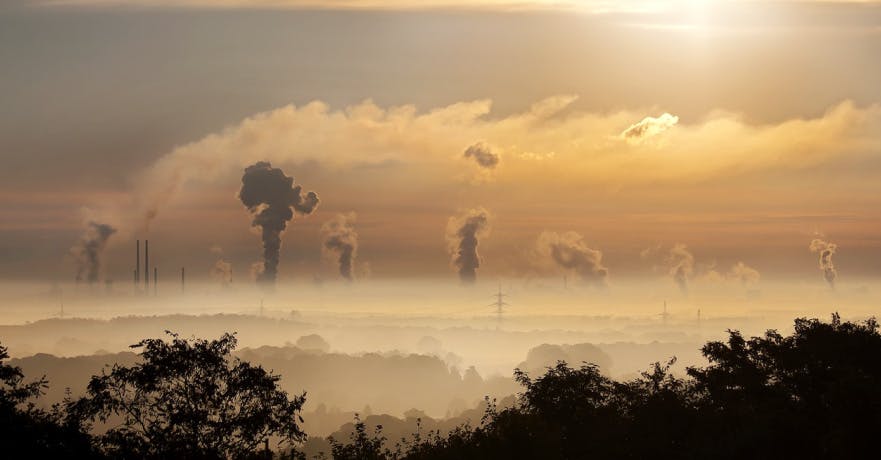
Sustainable Development Goals (SDGs): All You Need to Know
The United Nations has defined 17 goals, aimed at creating a better world. What are these so-called "Sustainable Development Goals" ? Explanations.
ESG / CSR
Industries



The Kyoto Protocol was one of the original greenhouse treaties that has inspired and provoked new planning to prevent further global warming and greenhouse gases to the environment in the present day. Unfortunately, the honor system doesn't work as well in the U.S. as it does in Japan – as global climate change continues to prevent emissions reductions from being successful.
Highly developed nations around the globe need tangible motivation. In other words, developed countries need a treaty that holds them accountable for their carbon dioxide emissions in order to make a proper effort to decrease global greenhouse gas emissions.
👉 Was the Kyoto Protocol successful in reducing greenhouse gas emissions?
The Kyoto Protocol, created in Kyoto, Japan in 1997 – was a previous international agreement that proposed to reduce carbon emissions and lower the amount of greenhouse gas (GHG) in the atmosphere. The primary reason for the creation and establishment of the Kyoto Protocol was to provide incentive to industrialized nations that didn't take cautionary measures to significantly reduce their carbon emissions.
The Kyoto Protocol utilized the United Nations Framework Convention on Climate Change by requesting industrialized countries with strong economies to reduce greenhouse gas emissions in correlation with their individual environmental goals.
The treaty itself only asked those countries to adopt policies and measures on mitigation and to report their total carbon dioxide emissions periodically. The Kyoto Protocol got its name as the United Nations Framework Convention was help in Kyoto, Japan – where the idea of the international treaty first came about.
Although the Kyoto Protocol is now obsolete in the present day, the original mission is carried out through other treaties and concepts, and the effects of high industrial production on greenhouse gas emissions is still a topic of interest. 📝
The purpose of the Kyoto Protocol was to softly demand that highly developed countries with high levels of industrialization reduce emissions and mitigate the production of greenhouse gases.
The Kyoto Protocol succeeded in this by implementing tough, thorough regulations for the developed countries that signed the Kyoto Protocol. 🖊️

The Kyoto Protocol worked by providing the countries who signed the treaty with a multitude of resources to assist and encourage them to meet their environmental goals.
Countries that signed and participated in the Kyoto Protocol were allowed a threshold of carbon emission levels for certain periods of time, and also contributed to carbon credits. If a country contributed to a higher level of carbon emissions allotted for the current time period, and didn't contribute to limiting global warming, they were penalized ❌– and their limit for the next period would have been adjusted accordingly to further prevent greenhouse gas emissions.
These strongly recommended environmental incentives were later measured to ensure each country involved in the treaty was fully-engaged in the Kyoto Protocol and reducing global GHG emissions.
One method of the Kyoto Protocol was to utilize natural resources, one of them called, “sinks” – in order to remove greenhouse gas emissions from the atmosphere. The Kyoto Protocol also encouraged the planting of trees to absorb carbon dioxide emissions from the air, demonstrating how Kyoto mechanisms and reduction commitments helped to prevent dangerous anthropogenic interference. 💨
Another approach of the international treaty, the Kyoto Protocol, was to prompt developed countries involved to partake in an international program called the Clean Development Mechanism (CDM). The Clean Development Mechanism motivated developed countries to contribute to funding for the necessary technology and infrastructure for less-developed countries, with the goal in mind to help reduce carbon emissions where lack of financial resources prevented these countries from reducing their carbon emissions. In addition, the Clean Development Mechanism helped to create emissions trading schemes and methods to improve upon energy efficiency – especially in developing nations.
The developed country that invested in infrastructure to reduce carbon emissions for the under-developed country could have claimed a credit towards meeting their requirements for the Kyoto Protocol.
A third practice put in place by the Kyoto Protocol was trading emissions. This permitted participating countries to buy and sell greenhouse gas emissions, which functioned as a method to work towards meeting the requirements of the Kyoto Protocol. If countries a part of the Kyoto Protocol were not successful in meeting their carbon emission reduction targets, they were required to offset the difference between their original targeted emissions and their real carbon emissions.

All of these mechanisms and requirements of the Kyoto Protocol are what made it so successful and effective at reducing greenhouse gas emissions.
The Kyoto Protocol expected, at minimum, for each country that signed the treaty to reduce their 5.2 % below their current level of greenhouse gas emissions during their first period of commitment.
These regulations were updated to be even more numerically demanding after the Kyoto Protocol was extended in 2012.
There were no emission targets for developing countries, as the Kyoto Protocol recognized the financial disadvantages of developing countries to fully fight against climate change.
But was the Kyoto Protocol useful to under-developed countries around the world, who didn't have the financial resources to follow the strict measures of the Kyoto Protocol?
While the Kyoto Protocol had a high standard in order to be deemed effective at emitting greenhouse gas emissions, it wasn't an equal opportunity for all nations.
Due to the fact that the Kyoto Protocol was based on strong principles and required stringent regulations to meet the Kyoto Protocol's objectives – it placed an unrealistic expectation on developing countries. In other words, the Kyoto Protocol was only feasible for developed countries – which hindered its global capability to reduce greenhouse gas emissions or stabalize greenhouse gas concentrations.
However, it is important to note that while the Kyoto Protocol wasn't suitable for developing countries, given developed countries are often the greatest contributors to greenhouse gas emissions – the Kyoto Protocol still remained an advantageous and influential tactic to reduce carbon emissions by placing high expectations on these developed countries to employ concrete action to reduce their carbon emissions.

When the Kyoto Protocol was first introduced to the public for signatures in March 1998, Antigua and Barbuda, Argentina, the Maldives, Samoa, St. Lucia and Switzerland were the first to sign the Kyoto Protocol.
The United States withdrew from their initial agreement, or their first commitment period, to the Kyoto Protocol in 2001 contingent on the belief that it placed too much financial responsibility on developed nations.
Since the Kyoto Protocol was garnered towards developed nations using their fiscal capabilities to assist less developed countries that struggled without the resources necessary to reduce greenhouse emissions, the U.S. decided it wasn't a fair, fruitful trade-off – and came to the conclusion that it would ultimately inhibit the growth of their own economy.
If the Kyoto Protocol was successful in reducing greenhouse gas emissions for developed countries, then why did the Kyoto Protocol end?
At the 18th Conference of the Parties, which took place in Doha, Qatar in 2012 – the delegates decided to extend the Kyoto Protocol until 2020. However, despite their decision to extend the Kyoto Protocol – they also confirmed that they would expand on their proposition to create a new, legally intensive climate treaty by 2015.
Why was a more rigorous, comprehensive treaty necessary if the Kyoto Protocol was successfully encouraging developed countries to reach their greenhouse gas emission reductions?
Many nations deeply benefited and were inspired to prevent climate change by the Kyoto Protocol. The best example of this is many countries in the European Union, and the EU as a whole – who planned to reach, and even succeed their environmental goals under the Kyoto Protocol by 2011.
For example, two nations that did not ratify the Kyoto Protocol, the United States and China, who are simultaneously two of the world's greatest contributors to excessive greenhouse gas emissions – were producing such a high level of carbon emissions, that it completely counteracted any progress made by other countries that were successfully participating in the Kyoto Protocol.
Therefore, this new treaty to prevent climate change, initially suggested at the 17th Conference of the Parties in Durban, South Africa – would demand the largest greenhouse-gas producing countries (including those not abiding the Kyoto Protocol, such as China, India, and the United States) to restrict and reduce their greenhouse gas emissions.
This new treaty, later to be known as the Paris Climate Agreement, was set to be employed by 2020 – and to take place ahead of the expiration date of the Kyoto Protocol.

While the Kyoto Protocol was classified and recognized as one of the most efficacious environmental treaties to ever have been signed and employed, many critics have questioned its overall productivity.
The Kyoto Protocol served as a successful baseline for future treaties to fight against climate change to come. Due to the fact that the Kyoto Protocol was contingent on the efforts of developed nations, the beneficial impact of the Kyoto Protocol wasn't guaranteed.
For instance, countries like the United States, which chose to not participate in the Kyoto Protocol – ultimately hindered the success of other countries that were meeting the greenhouse gas emission targets provided by the treaty.
Also, various critics claimed that the regulations put in place by the Kyoto Protocol were too easy to achieve, and therefore wouldn't make an overall difference in combating climate change – even if a country like the United States had agreed to participate.
As explained earlier, the Kyoto Protocol didn't end permanently when the treaty wasn't renewed – but rather the Kyoto Protocol and its original premise has been carried out, updated, and established in other treaties or countries around the world.
The most well-known example being The Paris Climate Agreement.
At the 21st Conference of the Parties, which took place in Paris, France in 2015 – delegates at the conference signed a unilateral agreement to mitigate climate change and rising global temperatures.
The Paris Climate Agreement officially replaced the Kyoto Protocol at this conference. The Paris Climate Agreement, dedicated to further reducing greenhouse gas emissions than the Kyoto Protocol – demanded a progress report every five years and requested an exorbitant fund of $100 billion by 2020, to be provided anually to assist developing countries to employ technologies to reduce greenhouse gas emissions.
As the most paramount global climate agreement to date, the Paris Agreement demands all countries, whether intrinsically motivated or not – to contribute to reducing their own greenhouse gas emissions.
If reading this article about Kyoto protocol has made you interested in reducing your carbon emission to further fight against climate change – Greenly can help you!
At Greenly we can help you to assess your company’s carbon footprint, and then give you the tools you need to cut down on emissions. Why not request a free demo with one of our experts - no obligation or commitment required.